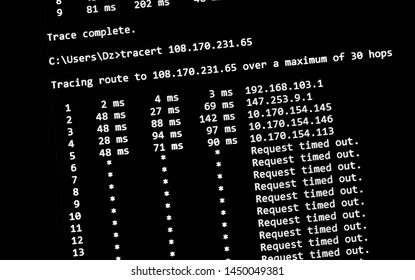Traceroute: A Technical Guide to Network Path Analysis
 Shriniwas Shukla
Shriniwas Shukla
Traceroute, a network diagnostic tool, plays a pivotal role in unraveling the intricate paths that data packets take as they navigate the Internet. This comprehensive guide delves into the essence of traceroute, its relevance, and the nuts and bolts of how to employ it effectively. Moreover, we explore the specialized realm of TCP traceroute in cloud environments.
What is Traceroute:
Traceroute, known as tracert in Windows, is a network utility used to track the route data packets follow from a source host to a destination host or server. By dissecting each hop along the way, network administrators gain a clear perspective of the network path.
Why Traceroute
The significance of traceroute is profound, particularly in network troubleshooting and optimization:
Identifying Network Hops: Traceroute unveils the intermediary network devices (routers) that data packets traverse.
Diagnosing Latency: It measures response times at each hop, aiding in the identification of latency sources.
Spotting Routing Errors: Network misconfigurations or routing anomalies can be exposed through traceroute analysis.
How to Use Traceroute
3.1 Windows
In the Windows environment, the tracert command comes equipped with various options to tailor your trace:
-d: Prevents hostname resolution and displays only IP addresses, which can speed up the trace.-h <max_hops>: Specifies the maximum number of hops before the trace terminates.
Example:
tracert -d -h 15 <destination>
3.2 Mac
On macOS, the traceroute utility supports the following options:
-n: Similar to Windows'-d, it prevents hostname resolution and displays IP addresses.-q <queries>: Adjusts the number of queries per hop, providing more detailed results.
Example:
traceroute -n -q 3 <destination>
3.3 Linux
Linux's traceroute tool offers the following options:
-n: Like the-doption in Windows, it prevents hostname resolution and shows IP addresses.-m <max_ttl>: Sets the maximum TTL to limit the number of hops in the trace.
Example:
traceroute -n -m 15 <destination>
4. How Traceroute Works
Traceroute relies on three pivotal components to divulge the network path:
4.1 Ping and ICMP
Traceroute initiates the journey with ICMP Echo Request (ping) packets, each assigned a low Time-to-Live (TTL) value. These initial packets trigger ICMP Time Exceeded (ICMP Type 11) responses from the first-hop router. The TTL increases with each iteration, aiding in hop identification.
4.2 Time-to-Live (TTL)
Time-to-Live is an IP header field defining the maximum number of hops a packet can traverse before being discarded. When a router receives a packet, it decrements the TTL and checks if it has reached zero. If so, the router sends an ICMP Time Exceeded message back to the sender.
4.3 UDP
Most traceroute implementations utilize UDP packets with varying port numbers. As packets traverse hops, the destination port increments, enabling each response to be associated with a specific hop number, thus forming the network path.
5. Traceroute in the Cloud
In cloud environments, conventional ICMP-based traceroute may encounter limitations due to security and network restrictions. However, a TCP-based alternative, known as TCP traceroute, comes to the rescue.
5.1 TCP Traceroute
Purpose: TCP traceroute is employed when ICMP traffic is restricted in cloud environments. It maps the route of TCP packets to the destination, aiding in the identification of network or firewall-related issues.
Usage: Most TCP traceroute tools function similarly to the standard traceroute but rely on TCP instead of ICMP. You specify the destination IP and port, and the tool sends TCP packets to trace the path.
Example using tcptraceroute:
tcptraceroute -n -p <port> <destination>
Security Considerations: Using TCP traceroute in cloud environments may require permissions and compliance with network security policies. Ensure authorization to perform such traces.
In conclusion, traceroute is an indispensable asset for network administrators and operators. Understanding its technical intricacies is imperative for efficient network management, troubleshooting, and optimization. With the right usage, traceroute reveals the hidden paths that data packets follow and assists in diagnosing connectivity issues, ensuring smooth network operations.
Subscribe to my newsletter
Read articles from Shriniwas Shukla directly inside your inbox. Subscribe to the newsletter, and don't miss out.
Written by

Shriniwas Shukla
Shriniwas Shukla
Versatile Network Engineer | Multi-cloud aficionado | Infrastructure as Code Enthusiast | Python Automation Guru 🌐 Building robust cloud networks across multiple platforms 🔧 Automating network operations and deployments with Python 🚀 Leveraging Infrastructure as Code (IaC) for AWS and OCI using Terraform 💡 Passionate about optimizing network performance and security 💻 Sharing insights and knowledge on Hashnode to empower the tech community Join me on my journey as I navigate the exciting realm of multi-cloud environments, master the art of Infrastructure as Code, and unleash the power of Python for network automation. Let's explore the ever-evolving world of network engineering together! #NetworkEngineer #MultiCloud #IaC #PythonAutomation #Hashnode